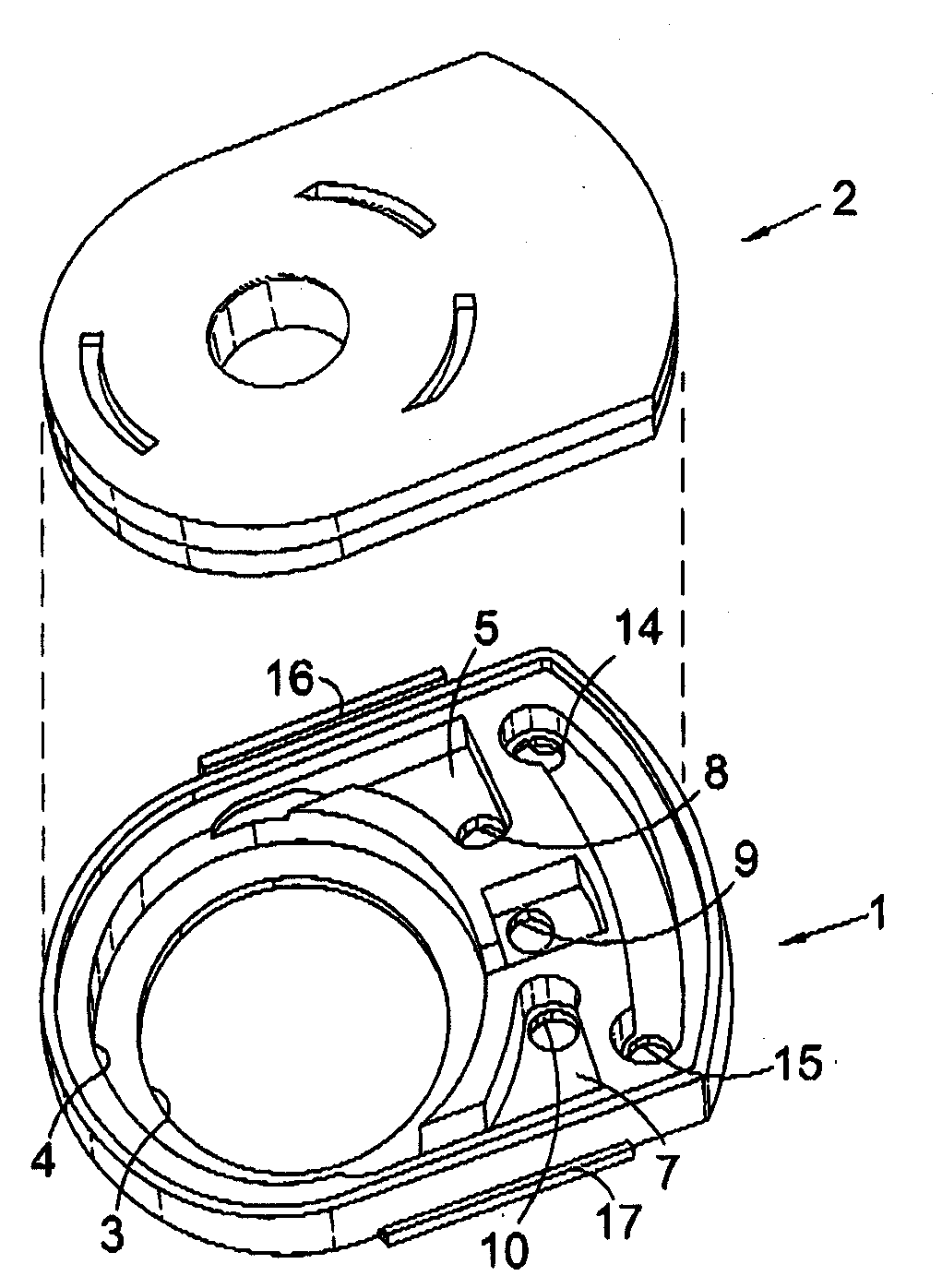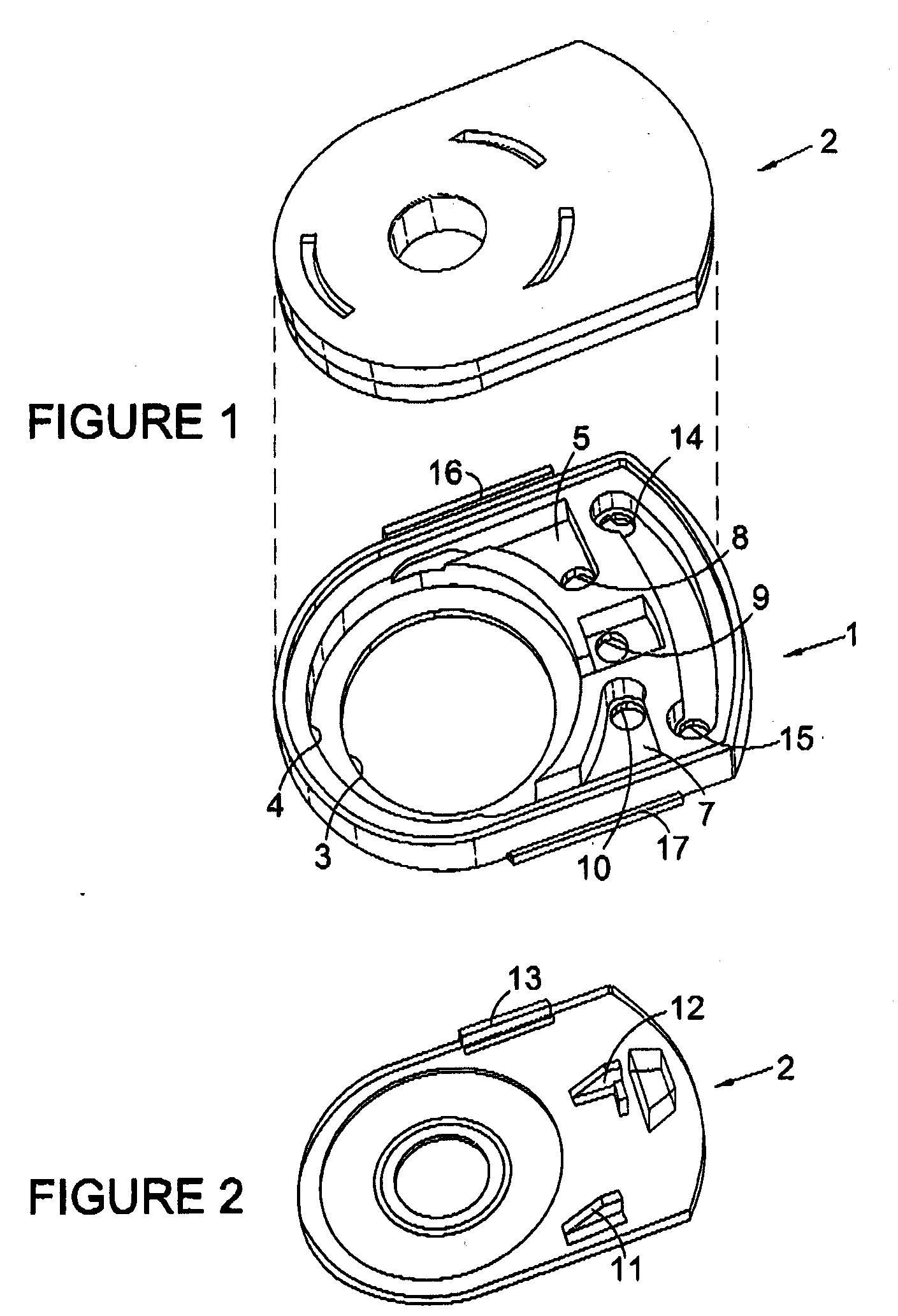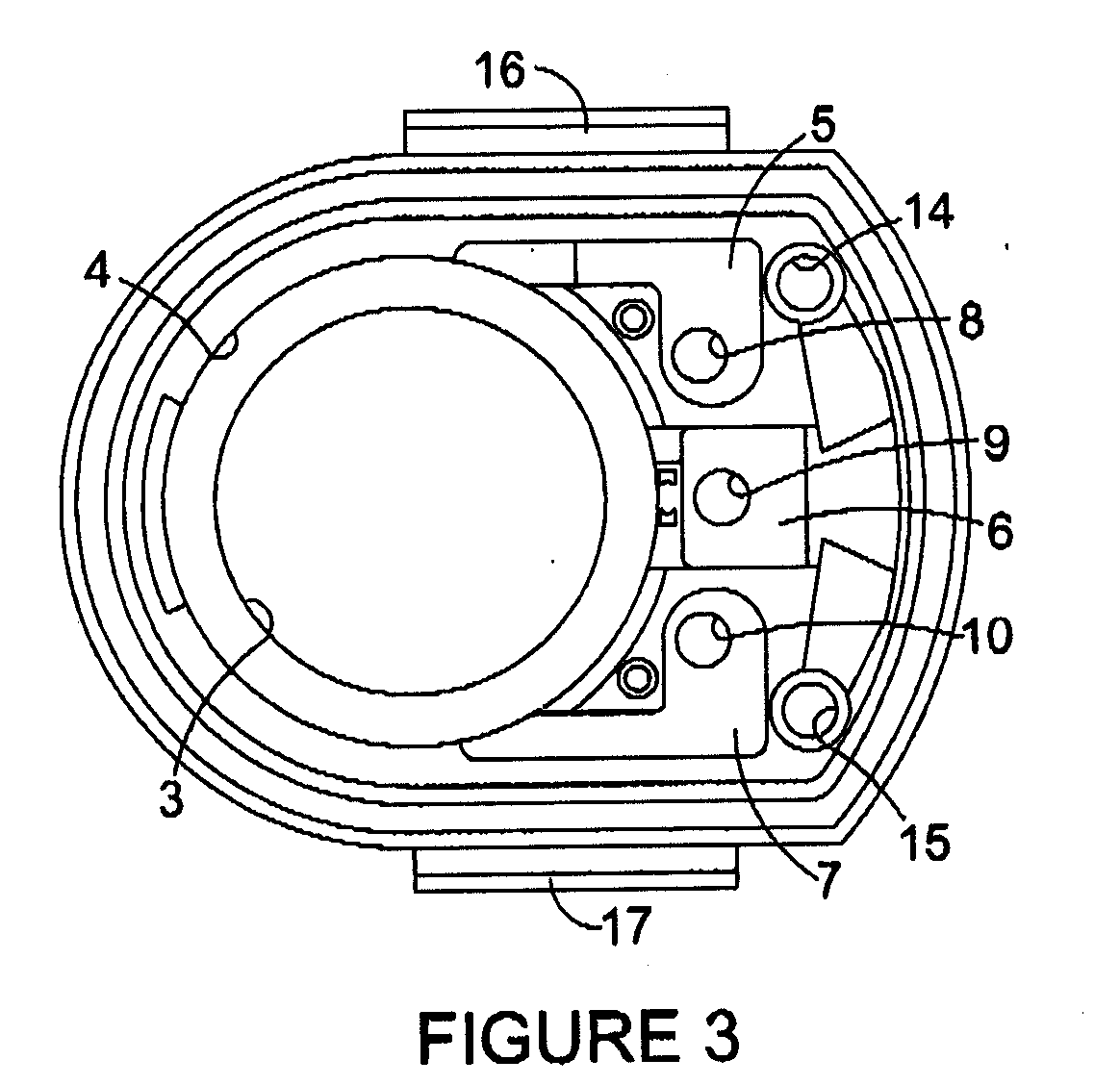Electrode contact pellet and associated photoionisation detector assembly
a technology of photoionisation detector and electrode contact, which is applied in the direction of rotary current collector, coupling device connection, non-rotary current collector, etc., can solve the problem of poor proportionality between response and ionisable gas concentration, the response to organic gas not to increase in proportion, and the problem of generating such a voltage becomes more problematic. , to achieve the effect of low cost and easy replacemen
- Summary
- Abstract
- Description
- Claims
- Application Information
AI Technical Summary
Benefits of technology
Problems solved by technology
Method used
Image
Examples
Embodiment Construction
[0046]All references to downward and other directions are relative to the base of the pellet, as shown in the drawings, and do not imply any particular orientation of the pellet.
[0047]Referring first to FIG. 1 of the accompanying drawings, an electrode pellet in accordance with the invention, and for use with a photoionisation detector (PID) capsule, comprises a moulded plastics base body, generally designated 1, and a moulded plastics lid, generally designated 2, which can be fitted and secured to the pellet base body 1.
[0048]The base body 1 comprises a circular aperture 3 for alignment with one end of an ionisation lamp of a PID capsule, as will be described hereinbelow.
[0049]A circular recess 4 concentric with the aperture 3 is arranged to receive therein three electrodes (not shown) separated by respective electrically-insulating spacers (also not shown), as will also be described hereinbelow.
[0050]Each electrode has a contact (not shown) which extends into a respective one of t...
PUM
 Login to View More
Login to View More Abstract
Description
Claims
Application Information
 Login to View More
Login to View More - R&D
- Intellectual Property
- Life Sciences
- Materials
- Tech Scout
- Unparalleled Data Quality
- Higher Quality Content
- 60% Fewer Hallucinations
Browse by: Latest US Patents, China's latest patents, Technical Efficacy Thesaurus, Application Domain, Technology Topic, Popular Technical Reports.
© 2025 PatSnap. All rights reserved.Legal|Privacy policy|Modern Slavery Act Transparency Statement|Sitemap|About US| Contact US: help@patsnap.com



